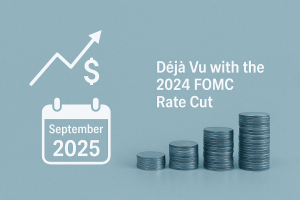Introduction
The AUD/USD currency pair, a significant barometer of global economic trends, is exhibiting intriguing behavior as it clings to a crucial trendline just ahead of the highly anticipated U.S. inflation data release. This pivotal moment is shaping expectations among traders and analysts, offering a window into the interplay of macroeconomic forces that influence forex markets.
Understanding The Trendline: Why Does It Matters?
Trendlines act as a visual representation of price movement over time, often serving as key indicators of market sentiment and trader behavior. The AUD/USD trendline currently in focus reflects months of dynamic movement influenced by global economic shifts, monetary policy decisions, and geopolitical events.
As of December 2024, the currency pair’s adherence to this trendline suggests a period of consolidation. This behavior often precedes a breakout, where the price could either surge higher or retreat sharply. Traders are carefully monitoring these movements to determine the pair’s next direction.
The Role Of U.S. Inflation Data
The upcoming U.S. inflation report is a critical data point with far-reaching implications for global financial markets. Inflation rates influence the Federal Reserve’s monetary policy decisions, impacting interest rates, bond yields, and the broader currency market.
For AUD/USD, the U.S. inflation data holds dual significance:
Impact on the U.S. Dollar (USD): Higher inflation figures often lead to expectations of tighter monetary policy, strengthening the USD against other currencies.
Effect on Australian Dollar (AUD): The AUD, often tied to commodity markets and global risk sentiment, may react inversely to USD strength.
Market participants are bracing for potential volatility, knowing that even slight deviations from forecasted inflation figures could lead to significant price movements.
Technical Analysis: A Deep Dive Into AUD/USD Movement
Key Support and Resistance Levels
The AUD/USD is navigating a delicate balance around the 0.6500 mark, a crucial psychological level. Below this, support levels are identified near 0.6450 and 0.6400, which represent previous price floors. On the upside, resistance is expected at 0.6550 and 0.6600, levels that have capped recent rallies.
Indicators at Play
Relative Strength Index (RSI): The RSI currently hovers around the neutral 50 level, indicating neither overbought nor oversold conditions. This suggests the pair is in a consolidation phase.
Moving Averages: The 50-day moving average is converging with the trendline, reinforcing its importance as a potential pivot point.
MACD (Moving Average Convergence Divergence): The MACD histogram shows diminishing bearish momentum, signaling a possible shift toward bullish sentiment.
Fundamental Factors Influencing AUD/USD
Federal Reserve Policy Outlook
The Federal Reserve’s stance on interest rates remains the cornerstone of USD dynamics. Recent comments from Fed officials suggest a data-driven approach, with inflation figures playing a decisive role. Should the inflation report exceed expectations, the likelihood of further rate hikes may increase, strengthening the USD.
Commodity Prices and AUD Correlation
The AUD’s performance is intricately tied to commodity prices, particularly iron ore and coal, Australia’s major exports. Recent stabilization in commodity markets has provided some support to the AUD, but any sharp movements could disrupt this balance.
Global Risk Sentiment
Risk sentiment continues to be a driving factor for AUD/USD. As a risk-sensitive currency, the AUD benefits from positive global sentiment. However, any geopolitical tensions or market uncertainties could weigh on the pair.
Market Sentiment: What Traders Expect?
Sentiment indicators reveal a mixed outlook among traders:
Bullish Perspective: Optimists argue that a potential slowdown in U.S. inflation could temper Fed hawkishness, offering the AUD room to appreciate.
Bearish Perspective: Pessimists warn that a strong USD, bolstered by hawkish Fed signals, could push AUD/USD lower, breaching key support levels.
Scenario Analysis: What Lies Ahead For AUD/USD?
Scenario 1: Higher-than-Expected Inflation
Impact on USD: Strengthens as rate hike expectations increase.
AUD/USD Reaction: Likely to breach the 0.6450 support level, targeting lower ranges around 0.6400.
Scenario 2: Lower-than-Expected Inflation
Impact on USD: Weakens as dovish Fed expectations grow.
AUD/USD Reaction: Tests resistance at 0.6550, with potential for a breakout toward 0.6600.
Scenario 3: In-line Inflation Figures
Impact on USD: Minimal impact; markets may continue consolidating.
AUD/USD Reaction: Likely remains range-bound near the 0.6500 mark.
Strategies For Traders
Short-Term Strategies
Scalping Opportunities: Utilize tight stop-losses around key levels such as 0.6500 to capitalize on intraday volatility.
Focus on Breakouts: Monitor for breakout signals, especially if the pair moves decisively past 0.6550 or breaches 0.6450.
Long-Term Strategies
Trend Following: Align trades with the broader trend once a breakout direction is confirmed.
Hedging Risks: Use options to hedge against unexpected volatility stemming from the inflation report.
Conclusion
The AUD/USD currency pair stands at a critical juncture, with its movement along a key trendline underscoring the delicate balance of forces at play. As traders await the U.S. inflation data, the market remains poised for potential volatility, presenting both risks and opportunities.
For those navigating the forex market, understanding the technical and fundamental dynamics of AUD/USD is essential. Whether bullish or bearish, having a clear strategy and staying informed about macroeconomic developments will be crucial to success.



